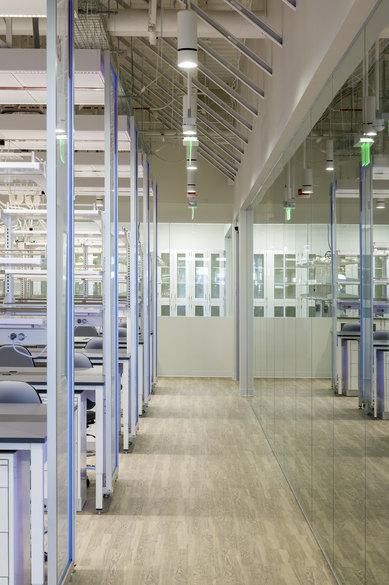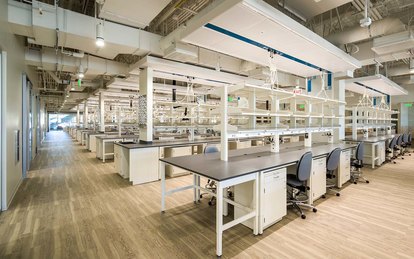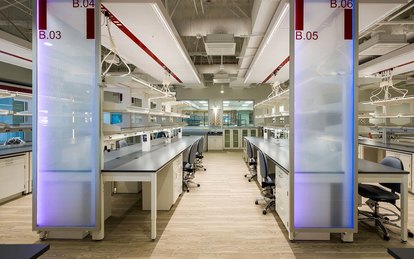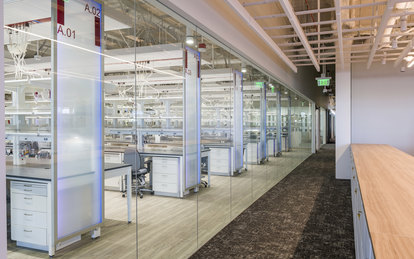Life Sciences Building
A major campus expansion creates a model for future growth for a medical device company. The showcase research facility supports cutting-edge biomedical engineering R&D, as well as a collaborative and fluid work environment that can quickly react to market demands.
Client
Confidential Client
Location
Irvine, California
Markets/Services
Architecture, Interiors, Lab Planning, Lighting Design, MEP Engineering, Science & Technology, Structural Engineering
A global leader in the design and manufacture of valves and other technologies to treat structural heart disease was experiencing rapid growth of its campus over the years which resulted in some inefficiencies and space redundancies. The company was ready for a next-generation facility that could support its evolution of innovation.
The new 32,000-square-foot complex known as “Building B” represents the first phase of a major transformation of the campus. It creates a consolidated and collaborative research environment to support several of the company’s product sectors (known as “Centers of Excellence,” or COEs) with laboratories uniquely designed for biomedical engineering research and prototyping. The open, shared environments foster collaboration across COEs, and the flexible lab design allows the company to quickly shift and expand its research focus as needed in the private sector.

SmithGroup provided a full-scope of services for the project, which would serve as a template for future buildouts on campus.
Building B comprises five three-story buildings. Bold use of color, lighting and materials create a sleek and striking laboratory environment, establishing the tone for future facilities. Entry into each laboratory block is through a futuristic portal, with an observation area for visiting physicians, patients and other partners. A simulation lab gives physicians the opportunity to train and practice performing implants with the products in a true surgical setting. For researchers, the bright and colorful lab space elevates their experience, a significant shift from the isolated, individual workstations that have been the tradition for decades. The more open environment, with its reduced footprint, increases efficiency and collaboration.


